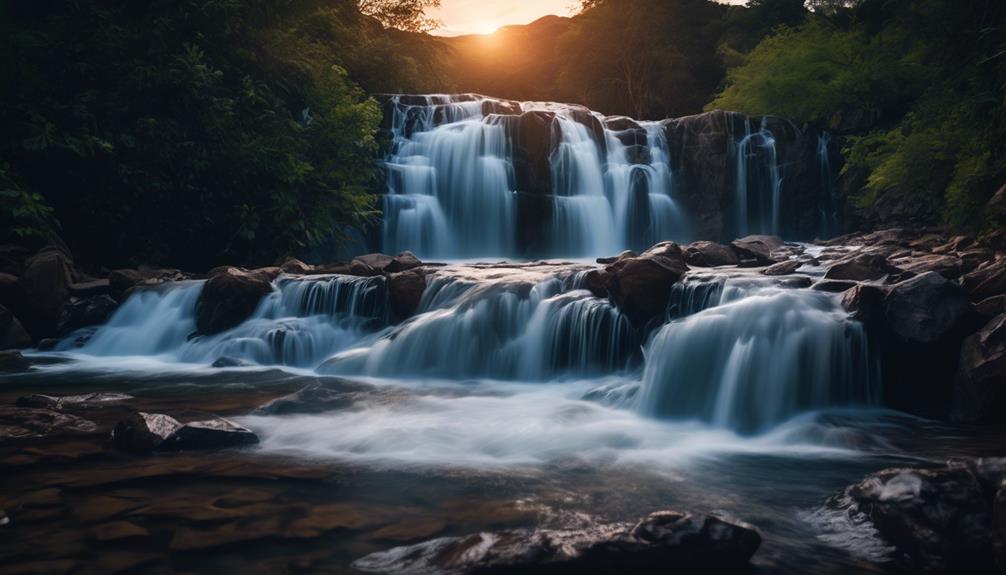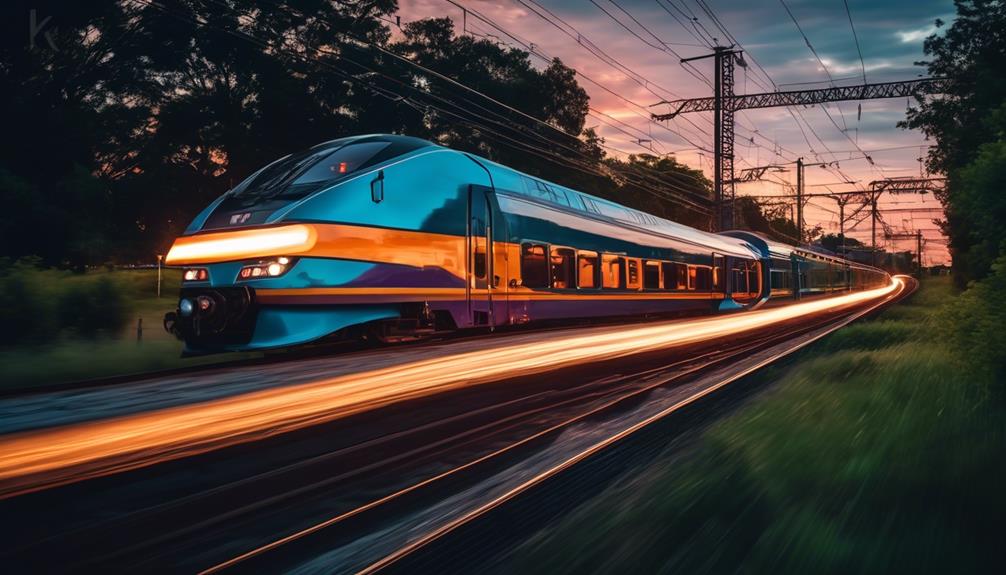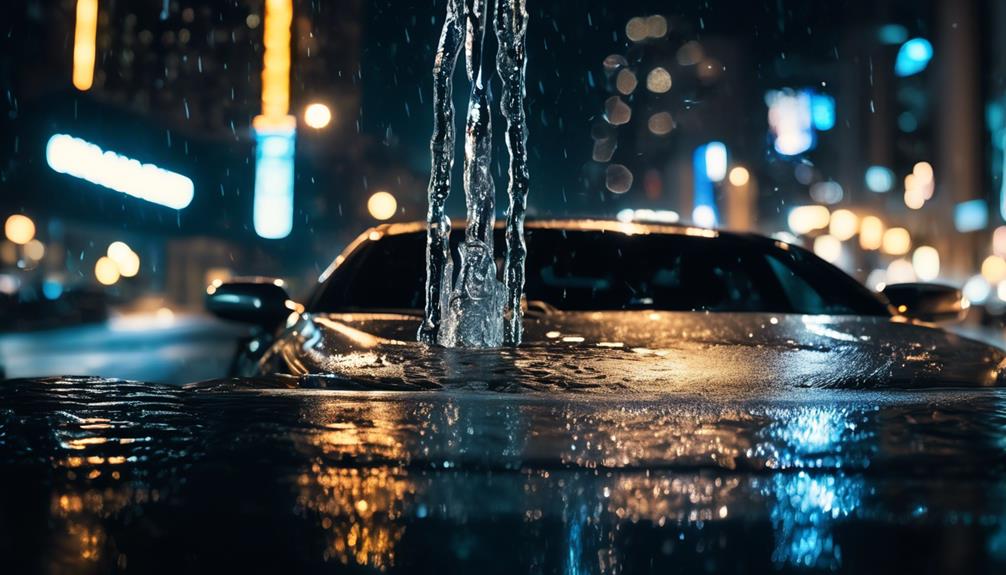Please note this post may contain affiliate links picked by me (Jay) that I have deemed may be of interest or relevant to you the reader of this.
These links do not affect the cost of the thing if you decide to purchase but i may get a little money if you choose to purchase.
For more information on my affiliate link policy click here.
As I stood at the edge of a bustling city street, camera in hand, I couldn't help but marvel at the fast-moving cars and the blur of people rushing past. It was in moments like these that I realized the power of adjusting shutter speed in photography.
You see, by simply manipulating this one setting on your camera, you can capture the essence of motion or freeze a moment in time. But why is it so important to understand and master shutter speed?
Well, let me tell you, my friend, it's the key to unlocking a whole new level of creativity and skill in your photography journey.
Key Takeaways
- Shutter speed is an important element in photography that affects the amount of light and sharpness of the image.
- Faster shutter speeds can freeze action, making them ideal for sports photography.
- Slower shutter speeds can create motion blur and artistic effects, especially in low light conditions.
- Long exposure techniques, such as capturing waterfalls or star trails, can result in stunning and captivating images.
Understanding the Basics of Shutter Speed
When it comes to capturing the perfect photograph, understanding the basics of shutter speed is essential for achieving stunning results. Shutter speed refers to the length of time that the camera's shutter remains open, allowing light to enter and expose the image sensor. It's a crucial element in photography as it directly affects the amount of light that reaches the sensor, thus determining the brightness and sharpness of the final image.
One of the key aspects of shutter speed is its ability to freeze action or create motion blur. By adjusting the duration of the shutter speed, you can either capture a moving subject in sharp detail or intentionally blur the motion for a more artistic effect. If you want to freeze action, such as capturing a fast-moving athlete or a bird in flight, you need to use a faster shutter speed. A higher shutter speed, such as 1/1000th of a second or faster, will help you freeze the subject and capture every detail with precision.
On the other hand, if you want to convey a sense of motion or create a dreamy effect, a slower shutter speed is your best bet. By using a slower shutter speed, like 1/30th of a second or slower, you can intentionally introduce motion blur into your photograph. This technique is often used in landscape photography to capture the movement of flowing water or the streaks of light in a cityscape at night.
Understanding the basics of shutter speed allows you to have full control over your photographs and unleash your creativity. Experimenting with different shutter speeds will help you achieve the desired effect and add a dynamic element to your images. Remember, freezing action or creating motion blur is all about finding the perfect balance between shutter speed and your subject's movement. So grab your camera and start exploring the exciting possibilities that shutter speed offers!
Capturing Motion With Faster Shutter Speeds
To capture the dynamic movement of a subject, utilizing faster shutter speeds is the key. When it comes to freezing action or capturing sports photography, fast shutter speeds are essential. By using faster shutter speeds, you can freeze motion and capture every detail of the action. Let me explain how it works.
| Shutter Speed | Effect |
|---|---|
| 1/1000s | Freezes action |
| 1/2000s | Captures fast-moving subjects |
| 1/4000s | Freezes extremely fast action |
| 1/8000s | Captures the fastest action |
As you can see from the table above, the faster the shutter speed, the better you can freeze action. For example, if you're photographing a basketball game and want to capture a player mid-air while dunking, a shutter speed of 1/1000s or faster would be ideal. This will ensure that the player is frozen in mid-air, with no motion blur.
Sports photography often requires capturing fast-paced action, and using faster shutter speeds allows you to do just that. Whether it's a sprinter crossing the finish line, a soccer player kicking the ball, or a gymnast performing a routine, freezing the action is crucial to capture the intensity and excitement of the moment.
Creating Dramatic Effects With Slower Shutter Speeds
Now that we've explored how faster shutter speeds can freeze action and capture fast-moving subjects in sports photography, let's shift our focus to the captivating effects that can be achieved with slower shutter speeds.
Slower shutter speeds offer a world of possibilities for creating dramatic and artistic effects in your photographs. Here are five ways you can use slow shutter speeds to take your photography to the next level:
- Blurring water with slow shutter speeds: By using a slow shutter speed, you can capture the graceful flow of water in a way that creates a dreamy, ethereal effect. Whether it's a babbling brook or a crashing wave, the smooth, blurred motion of water adds a sense of serenity and tranquility to your images.
- Creating light trails with longer exposures: One of the most exciting effects you can achieve with slow shutter speeds is capturing light trails. By keeping the shutter open for an extended period of time, you can capture the movement of cars, stars, or any other source of light, resulting in mesmerizing streaks of color across your image.
- Emphasizing motion: Slow shutter speeds can also be used to convey a sense of motion in your photographs. By intentionally blurring moving subjects, such as people walking or cars driving by, you can add a dynamic and energetic element to your images.
- Capturing nightscapes: With slower shutter speeds, you can capture the breathtaking beauty of the night sky. By leaving the shutter open for a longer period of time, you can capture the stars as they move across the sky, creating stunning star trails.
- Adding a sense of mystery: Slower shutter speeds can also be used to create a sense of mystery and intrigue in your photographs. By intentionally blurring certain elements of your image while keeping others sharp, you can create a surreal and otherworldly atmosphere.
Overcoming Low Light Challenges With Shutter Speed Adjustments
I've discovered an incredibly effective technique for overcoming low light challenges in photography with just a simple adjustment to the shutter speed. Low light photography can be quite tricky, as it often results in dark and grainy images. However, by adjusting the shutter speed, you can capture stunning images even in the most challenging lighting conditions.
When faced with low light situations, a common problem photographers encounter is capturing movement. The lack of light can make it difficult to freeze action without introducing motion blur. This is where adjusting the shutter speed comes in handy. By using a faster shutter speed, you can freeze the movement and capture sharp images, even in low light.
On the other hand, if you want to convey a sense of motion in your low light images, you can experiment with slower shutter speeds. This technique allows you to capture the movement of objects or people, creating a dynamic and artistic effect. It works particularly well for capturing light trails at night or the smooth flow of water in a dimly lit environment.
To achieve the best results, it's important to use a tripod or stabilize your camera when using slower shutter speeds. This will minimize any camera shake and ensure your images remain sharp, while still capturing the desired movement.
Mastering Long Exposure Photography Techniques
One of the most exciting aspects of photography is mastering long exposure techniques, which allow you to capture stunning and mesmerizing images. With the right skills and knowledge, you can create photographs that stand out from the crowd and showcase your creativity.
Here are five key techniques to master for achieving impressive long exposure shots:
- Creative Light Painting: Long exposure photography provides the perfect opportunity to experiment with light painting. By using a long shutter speed and a light source, you can create captivating and unique images. Whether you're drawing shapes in the air or illuminating objects, light painting adds a touch of magic to your photographs.
- Achieving Silky Smooth Waterfalls: Long exposure is the secret to capturing the mesmerizing flow of waterfalls with a silky smooth effect. By using a slow shutter speed, the movement of the water is beautifully captured, creating a sense of tranquility and serenity in your images.
- Star Trail Photography: With long exposure techniques, you can capture the movement of stars and create stunning star trail photographs. By leaving the shutter open for an extended period, the Earth's rotation causes the stars to appear as streaks across the sky, resulting in a breathtaking and otherworldly image.
- Capturing Motion in Street Photography: Long exposure techniques can also be used to capture the hustle and bustle of city life. By using a slow shutter speed, you can create an artistic blur effect that conveys the movement and energy of the streets, adding a dynamic element to your photographs.
- Nighttime Cityscapes: Long exposure photography is perfect for capturing the beauty of cityscapes at night. By using a slow shutter speed, the lights of the city blend together, creating vibrant streaks and trails of light. This technique adds a sense of drama and excitement to your images, showcasing the vibrant nightlife of the city.
Mastering long exposure techniques opens up a world of creative possibilities in photography. With practice and experimentation, you can capture images that are truly awe-inspiring and innovative.
Frequently Asked Questions
Can I Adjust the Shutter Speed on All Types of Cameras?
Sure, you can adjust the shutter speed on most types of cameras. It's an essential feature that allows you to control the amount of time the camera's sensor is exposed to light.
By adjusting the shutter speed, you can freeze fast-moving subjects or create motion blur for artistic effects. Understanding how different shutter speeds impact image quality is crucial for capturing stunning photos.
How Does Adjusting the Shutter Speed Affect the Overall Exposure of an Image?
Adjusting the shutter speed can have a significant impact on the overall exposure of an image. By controlling the duration that the camera's sensor is exposed to light, you can either freeze fast-moving subjects or capture their motion blur.
Slower shutter speeds allow for creative effects like silky smooth waterfalls or light trails from moving cars. This gives your photos a unique and artistic touch, showcasing your innovation and creativity as a photographer.
Are There Any Risks or Limitations to Using Faster Shutter Speeds?
There are indeed risks and limitations to using faster shutter speeds in photography.
One risk is that it can result in underexposed images, especially in low-light situations.
Additionally, using fast shutter speeds may limit the amount of light that reaches the camera's sensor, potentially reducing image quality.
However, these limitations can be overcome with proper technique and equipment.
Can I Achieve a Shallow Depth of Field by Adjusting the Shutter Speed?
Adjusting the shutter speed is key to achieving a shallow depth of field and mastering low light photography. By manipulating the shutter speed, you can create a beautiful bokeh effect, where the background becomes beautifully blurred while the subject remains in sharp focus.
This technique adds a touch of artistry to your photos, making them more visually appealing and innovative.
What Is the Ideal Shutter Speed for Capturing Waterfalls or Other Moving Water?
When it comes to capturing the beauty of waterfalls or other moving water, finding the ideal shutter speed is key. Adjusting shutter speed allows me to freeze the motion of the water or create a smooth, dreamy effect with long exposure.
Conclusion
So, next time you're out with your camera, don't forget the power of adjusting your shutter speed. It may seem like a small detail, but it can make a world of difference in your photography skills.
By understanding the basics, capturing motion, creating dramatic effects, and overcoming low light challenges, you'll be well on your way to mastering the art of photography.
Don't let the fear of adjusting shutter speed hold you back from creating stunning images that will leave a lasting impression.


